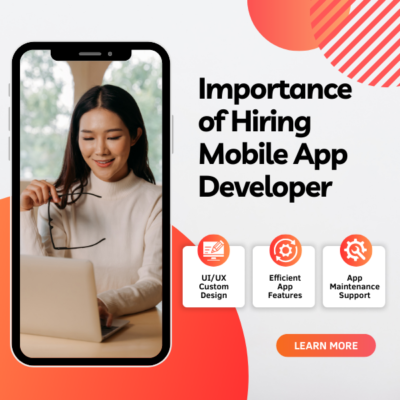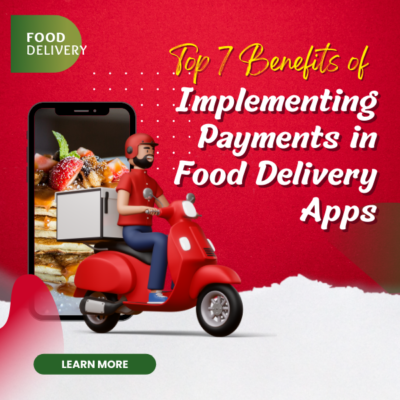Every app owner aspires of building an exceptional mobile application that offers profound value to the users. Consequently, they spend a lot of time and effort on the various stages of app development: discovery, design, and development.
Although offering value to the end-users is the ultimate goal behind any product, its pricing is equally important that should not be overlooked. The app monetization strategy should be carefully planned and executed to ensure a lucrative and scalable mobile app business.
What is App Monetization Strategy?
App monetization is how you make money from your app. This plays a vital role in marketing as it helps your app gain initial traction and visibility in the app store. The way you determine the price of your mobile app decides the app’s success, both in terms of the number of app downloads and user retention in the long run.
However, determining the right price and monetization strategy is rather tricky. The mobile apps that are offered for free or at a relatively low-cost experience greater market penetration whereas those available at a higher price generate better ROI. So, how to decide the best monetization
strategy for your app?
Numerous factors come into play when establishing the right price for your app. In this article, we will look at all those factors as well as discuss the most popular pricing models for mobile apps. This will help you strategically decide the best monetization strategy for your product. Things to consider before deciding mobile pricing strategy
Research about target customers & demand
Knowing your specific target customers is not just important for developing the app, but also for establishing its price. Is your mobile app targeted towards school and college students who typically run short of money but get addicted to anything engaging quickly? Or, is the app targeted towards high net-worth professionals who don’t like to overspend on anything that is not very useful or practical? Identifying these details is important to choose the right app
monetization strategy.
Offer higher value compared to the price
Customers are willing to pay for something only when they feel it is worth it. If your app costs push prices above their perceived value, the customers simply won’t buy it. Alternatively, if the product’s perceived value is greater than its price, the customers will be happy to spend on it.
So, make sure that your product is framed and offered to the customers in a way that its perceived value is greater than the price. This will help to gain customer attention and make them ready to pay whatever is the amount.
Perform Competitor Analysis
When it comes to pricing, you just cannot opt for something completely unique and never seen before. Thus, it is advisable to take a cue from your competitors and analyze their pricing strategy. For instance, you cannot choose a paid pricing strategy when all the other apps in your
the category is available for free.
You must perform a competitor analysis to see what product features and level of service your competitors are offering for those prices. You can understand how they have positioned themselves in the market and the kind of customers they are attracting. The answers to these questions will give you an industry benchmark for your pricing.
User experience has its own significance
Before you begin with the product pricing, consider several factors that help to enhance the end-user experience. You may envision exceptional functionality but that will be of no use if the developers fail to develop the app effectively. The app’s features and functionalities should be extraordinary that has the potential to persuade the users.
Affordability of your product
The cost of the mobile app should be affordable for all customers. A thorough analysis of the market will help you understand the price range that the users will be able to easily afford. Also, the value of the product is extremely important. Once the app is out there, the prospective users are going to analyze it before they spend their money on it. So, make sure the app you offer is worth the price you are asking for. If the app has considerable attached value, you will be able to convince the users with persuasive marketing skills.
Test the product at a variety of prices
The best way to determine the optimal market price is to test your product at multiple price levels and see how the customers respond. An app is not only something that is what it is worth for, but also what the customers are prepared to pay for. One important thing about mobile apps is that they help to set up recurring revenue streams. Thus, do not just look at the revenue per price. Instead, consider what the recurring revenue model will look like. Keeping this in mind, test the product at varying price points and see who the customers respond to each time.
The choice of platform
A lot of surveys conducted reveal that Apple users are more open to opt for paid apps in comparison to Android users. Therefore, if you plan to launch a paid app, you must consider Apple App Store as the Google Play Store can be very challenging in this regard. This is a significant factor that can help to formulate your app monetization strategy.
Different Mobile App Monetization Models
Over the years, some mobile app monetization strategies have really stood out as efficient and
effective. Here, we will look at all those pricing strategies in detail.
- Free
As the name suggests, free apps do not charge the customers anything. They are absolutely free to download, and in most cases, these apps generate revenue through advertisements. Free apps are seen as an incredible tool to develop a large customer base and retain them in the long run. Across both the Play Store and the App Store, you can easily find a myriad of free apps. They are a great way for businesses to enhance customer engagement and facilitate brand promotion. In many cases, these apps are an extension of businesses and serve as a channel for offering
customer service.
Moving on, there are two types of free pricing strategies to choose from: completely free and in-app purchases. In the former, the user doesn’t have to pay any money. Such apps are used when the goal is not to make money from the app but to redirect the customers to other money-making channels. In the latter, the apps offered are for free but they feature ads that flash while the users use the app. These advertisements are highly relevant that pique the user’s interest and persuade them to click on it.
Pros
- Higher download rates
- Drives awareness and boosts customer engagement
- Always gets an edge over paid apps in the same category
Cons
- Can trigger bad reviews
- Doesn’t enjoy a great customer base to generate revenue from in-app ads
- Can be expensive to support a non-paying userbase
- Freemium
This is another popular monetization technique that is primarily a modified version of the free pricing strategy. In this, you can offer different features on the free and premium versions of a specific app.
In essence, the free app plan enables the users to download the basic version of the app that comes with limited features and functionalities. If they wish to enjoy the more advanced features, they can subscribe to the paid plan of the app. There are three different freemium strategies that you can choose from, depending upon your app type. They are as follows:
- The first model includes apps that are absolutely free to download. However, these apps
come with limited functionality. The users can upgrade to the premium paid plan if they
want more advanced features. - The second model includes an app with a full range of features available only for a
limited period of time. This strategy is effective as it enables the users to experience the
app’s utility and get familiar with it. Once they start enjoying it, they will be willing to
pay for it and avail the services. - The last model includes apps where all the features and functionalities are available to the
users for free, but they come with built-in ads. Such apps persuade the users to pay a little
extra to enjoy an ad-free app.
Pros
- Users can experience the app without purchasing anything
- It helps to attract a large base of customers
- Users can pay only for what they really need
- Possible to make money off ads in the free version
Cons
- Supporting non-paying users can be expensive
- Users may not always understand the value of premium plans
- A lot of effort is needed to persuade free users into purchasing paid plans
- Paid
Paid apps follow a straightforward business strategy. The users need to pay to download the app and avail its services. Owing to an incredible lot of free and freemium apps available nowadays, paid monetization strategy is considered the least effective. If you plan to go ahead with a paid pricing strategy, you need robust marketing to back it up. our marketing campaign should be so effective that the users understand the value attached to your app. Although paid pricing strategy makes it difficult to acquire a customer, once they see that your app offers the perceived value, they will turn into loyal customers.
Mostly, all brands offer a one-week free trial period along with their paid apps. This is a great approach to attract potential users by giving them an opportunity to experience your app and its functionality. If they like your app, they will be willing to pay for it.
Pros
- Great for setting up a user base of quality customers
- There is profit with every download
Cons
- Acquiring users the first time can be very difficult
- Users have greater expectation from paid products
- Paymium
Now that you understand paid and freemium models, you can easily comprehend premium, which is an amalgamation of the two. In simple words, paymium apps not only ask the users to pay for them but also pay an additional cost to avail added functionality. It is true that paymium
app monetization technique isn’t very popular, however, they have the potential to generate high streams of income.
For a paymium model to be successful, the app requires unique functionality, practical features, and appealing content. Besides, it needs to be complemented by a powerful marketing strategy to draw a roster of quality customers. Typically, paymium model is most suited to social networking and music apps. Once the users get addicted to the app, they don’t mind spending extra to avail of added functionalities.
Pros
- Makes you think of unique and distinctive app ideas
- Generates a steady income stream
Cons
- Acquiring users the first time can be very difficult
- Requires a great deal of effort to gratify the customers
Final Words
These are some of the most popular app monetization techniques that you can choose from. But make sure to put a lot of effort into choosing the right pricing and strategy. An incorrect price can break the deal even before the download happens. Your product pricing should be in sync with the customer and market expectations and offer the perceived value to the users. Only then you will be able to accomplish your business goals and have a successful app product.



